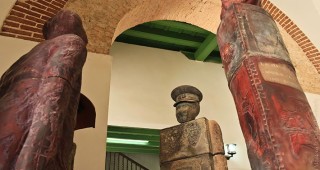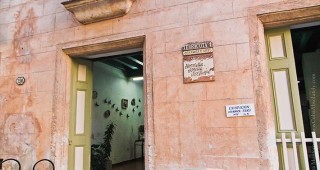
Located on the north-west corner of the former Plaza de la Ciénaga, today Plaza de la Catedral, this mansion stands out from its neighbors due to its wide and spacious portal juts out onto the plaza, thus breaking its symmetry. This mid-18th-century house (built from 1751-1775) boasts a beautiful inner courtyard and original 18th-century stained glass on its upper-floor windows.
The original owner was Sebastián Peñalver, lawyer, alderman and mayor of Havana, who had been accused of collaborating with the British interventionists. The house was sold in 1772 to Josefa Calvo de la Puerta–a descendent of one of the founding families of the city–but was later purchased by Antonio Ponce de León, the Marquis of Aguas Claras, the name by which the mansion is known.









 Art Deco
Art Deco








